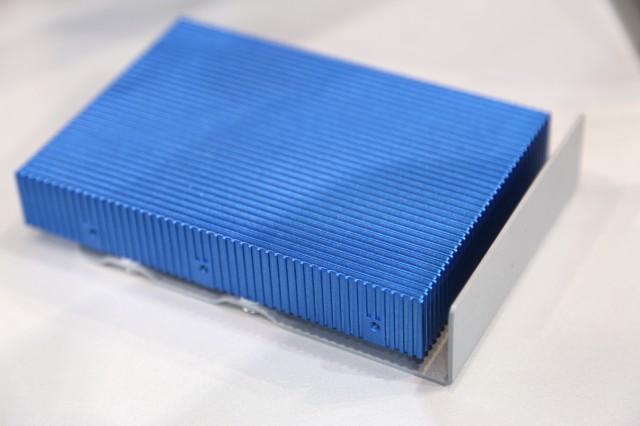
LAS VEGAS, NEVADA—Consumer SSD development has largely centered on 2.5-inch or tiny mSATA form factors. By using the larger 3.5-inch form factor, however, Other World Computing plans to push SSD capacities up to 2TB for Mac Pro or other workstation users.
Dubbed the "Mercury Viper," the bright blue, aluminum-clad SSDs are designed to fit the larger 3.5-inch drive bays found in most tower-style PCs. The extra volume allows OWC to pack more high-capacity NAND chips on a single "board," starting at 240GB and going all the way up to 2TB. OWC also promises 600MB/s transfer rates from the SandForce-powered drives over an SATA 3 connection.
OWC still makes a variety of 2.5-inch SSDs which can be used in a full-size workstation with an adapter bracket. But such drives typically max out in capacity at around 512GB. With a maximum of 2TB, it will be possible to outfit a four-bay workstation with up to 8TB of fast SSD storage. Those drives could be configured in a software RAID for even faster throughput.
Still, the capacity and performance won't come cheap. Pricing hasn't been finalized, but users can expect to pay a premium. "We designed the Viper primarily for performance and capacity, not price," OWC spokesperson Grant Dahlke told Ars.
That's in stark contrast to where the rest of the market is headed, typically driving costs down and making the most of 2.5-inch and mSATA form factors used in notebooks and Ultrabooks. But workstation owners may care less about budget and more about getting work done. "We think the price will be right for the kind of user that spends $6,000 on a computer," Dahlke said. "And you can't get this kind of capacity anywhere else."
Development of the Mercury Viper is still being finalized, but Dahlke said he expects the company to announce pricing and availability by March 1.
reader comments
62